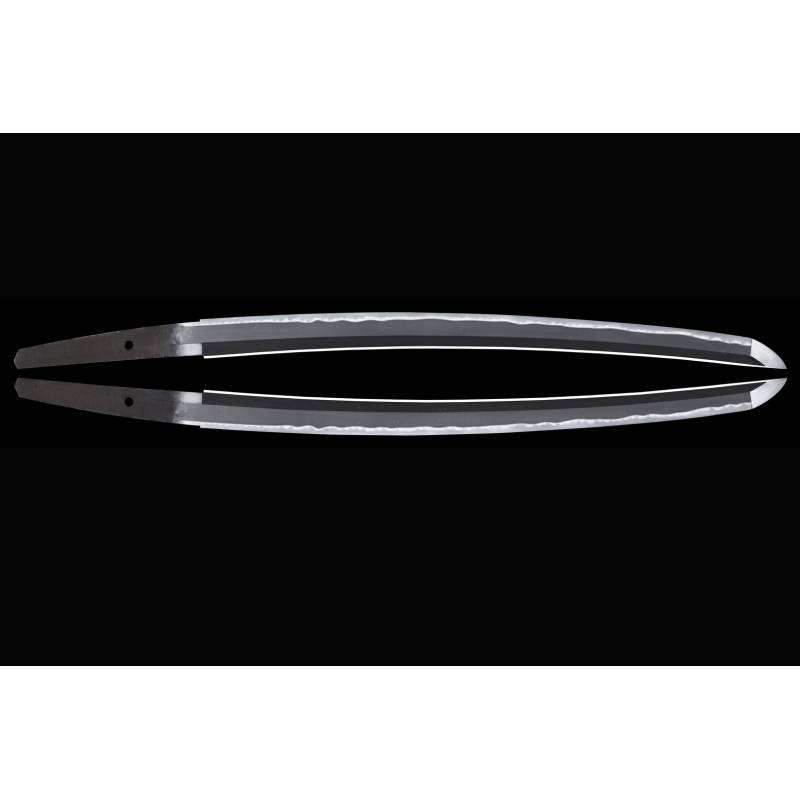


































A Shinshinto Wakizashi with excellent Koshirae attributed to Jyumyo, forged around the Edo Period.
Sold
This is a Japanese Shinshinto Wakizashi with excellent Koshirae attributed to Jyumyo. The Wakizashi is forged around the Edo Period.
The condition is very well and the Wakizashi comes in a Shirasaya with Koshirae and is in a fine polish.
You can find some nice Hataraki in the blade and the Jigane is hand forged with well grained Ko Itame Hada with with jinie (sprinkled with crystals) and some Muji style.
The Ko Gunome and Midare Hamon is Nioideki and Ko-Choji Midare. This hamon is bright and is very beautiful. An Ubu style flawless blade with a nice looking deep sori. For a wakizashi this is a regular size blade but is has a healthy and robust appearance. The kissaki, although described as "chu-kissaki" is rather on the big side. An excellent strong looking Wakizashi with Nagareru and clear Jigane. One Mekugi Ana in the Mumei Nakago.
Koshirae :
The Tsuba is round shaped Shakudo, a crane and a turtle are engraved by kebob way which design is lucky meaning in Japan. The Fuchi and Kashira are brass with ume tree and flowers are engraved with gold color. The Menuiki shows flowers (kiku) and are engraved with gold color. The Kogatana (little knife) is located in the side pocket of the saya. The Kozuka is a small handle of the Kogatana and shows a man walking in the rainfall. In Japan, Ume plums are associated with the monsoon season, so much so that the rainy season is called 'tsuyu', meaning 'Ume rain', so the fuchi kashira and Kozuka fit perfectly together.
Dimensions
Overall length: 55 cm
Nagasa length: 41.5 cm
Nakago: 13,4 cm
Sori : 1.1 cm
Mekugi : 1
Motohaba (bottom width): 2,90 cm
Motokasane (bottom blade thickness): 50 mm
Sakihaba (yokote width): 2,00 cm
Sakikasane (yokote thickness): 40 mm
Weight (blade): 292 gram
The shirasaya is made of ho wood.
This Japanese Wakizashi is authentic, and the matching NBTHK papers attesting the quality and authenticity.
Inclusive whole Oshigata. Oshigata is used by Japanese appraisers since before the Japanese middle ages, to record all the metallurgical activities in the steel of a Japanese sword that make it unique to any other sword.